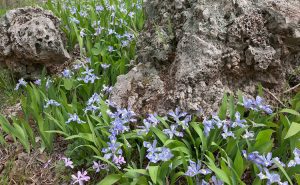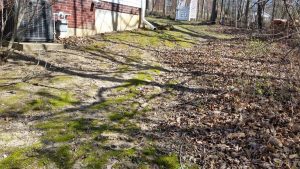
Shade trees are a wonderful feature in the landscape. They provide shade on a hot summer day, a welcome relief in addition to reducing cooling costs. However, they also create one of the most difficult landscaping challenges, especially if a slope is involved. Moss seems to be the only thing holding the soil. What rainfall that actually soaks into the ground seems to be taken by all the trees.
Though other options are available, this blog will focus on Plants for Dry Shade. Dry shade is really what this landscaping situation is called, in spite of any mulching and watering attempts to adjust and change conditions.
Controlling erosion is the foremost concern for finding viable solutions in the shade, with an attractive yard coming in at a close second. Growing grass is almost impossible. It seems that mossy lawns are the norm, at least judging by the phone requests on how to get rid of moss. Some have decided to embrace the moss, but this is not a solution for all.
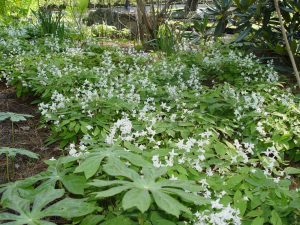
Turf doesn’t have to be the only ground covering. In heavy shade, other plants will grow better and offer interesting alternatives.
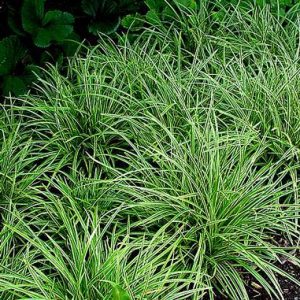
The first group of plant choices are perennial ground covers that are native to Missouri:
- Carex (Blue Zinger, Ice Dance, and Pennsylvania Sedge)
- Geranium (Cranesbill)
- Iris cristata (Crested Iris)
- Polygonatum (Solomon’s Seal)
- Sedum ternatum (a shade tolerant sedum)
- Packera (Senecio) obovatus (Groundsel)
- Solidago (Goldenrod – Zig-Zag and Elm Leaf)
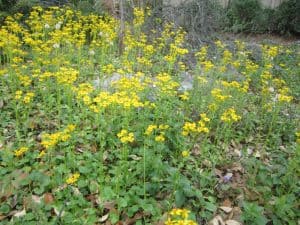
Ground covers and perennials that aren’t native but are effective:
- Ajuga
- Autumn Fern ‘Brilliance’
- Epimedium (Barrenwort)
- Euphorbia (Wood Spurge)
- Galium (Sweet Woodruff)
- Geranium ‘Biokovo’
- Hellebore (Lenten Rose)
- Heuchera villosa (Coral Bells)
- Lamium & Lamiastrum
Other options as solutions for a shady yard:
- Thinning of the canopy (removing trees, limbing up lower branches, thinning the tops of trees)
- Large areas of hardscape (large swaths of mulch or landscape rock) – this option can help to slow down erosion, reduce moss growth, and protect tree roots. Inter-planting is still highly recommended and can be quite beautiful.
